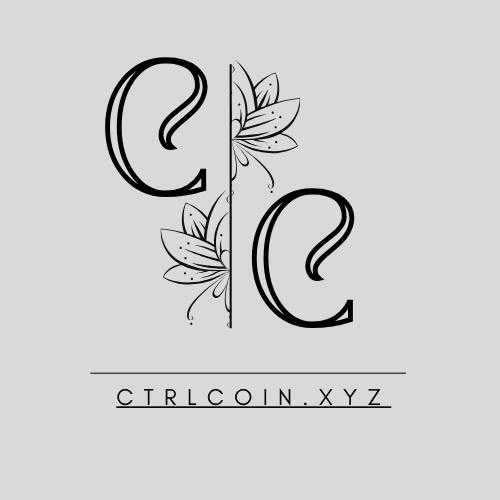Loan Types
Personal Loan Options: Choosing the Best Loan for Your Financial Goals
Personal loans can be an excellent financial tool, helping you achieve a variety of goals, from consolidating high-interest debt to funding home improvements or covering unexpected expenses. However, with so many personal loan options available, it can be overwhelming to determine which one best suits your financial objectives.
In this guide, we’ll break down the various personal loan types and provide insights to help you make an informed decision that aligns with your financial goals.
1. Unsecured Personal Loans
Overview: Unsecured personal loans are the most common type of personal loan and do not require any collateral. Lenders evaluate your creditworthiness and income to determine your loan eligibility and interest rates.
Best For:
- Debt Consolidation: Combine multiple high-interest debts (such as credit cards) into one loan with a fixed monthly payment and a potentially lower interest rate.
- Large Purchases or Emergency Expenses: Cover major expenses like medical bills, home repairs, or large purchases without risking your assets.
Pros:
- No collateral required
- Flexible loan amounts
- Fixed interest rates and repayment terms
Cons:
- Higher interest rates for borrowers with lower credit scores
- Limited borrowing limits compared to secured loans
Ideal For: Borrowers with strong credit who need flexible, no-collateral financing for various needs.
2. Secured Personal Loans
Overview: Secured personal loans require collateral, such as a savings account, vehicle, or other assets. This collateral reduces the lender’s risk, often resulting in lower interest rates compared to unsecured loans.
Best For:
- Home Improvements: Use your home as collateral to secure a loan for renovations or upgrades.
- Lower Interest Rates: If you have less-than-perfect credit, a secured loan may offer more favorable terms.
Pros:
- Lower interest rates than unsecured loans
- Easier approval for borrowers with poor credit
- Higher borrowing limits due to collateral
Cons:
- Risk of losing collateral if you default on the loan
- Longer approval process due to collateral verification
Ideal For: Individuals with valuable assets and those seeking lower interest rates and higher loan amounts.
3. Fixed-Rate Personal Loans
Overview: Fixed-rate personal loans offer an interest rate that remains constant throughout the loan term, ensuring consistent monthly payments.
Best For:
- Predictable Payments: Fixed-rate loans are ideal for those who prefer stability in their budget and want to avoid fluctuations in monthly payments.
Pros:
- Consistent payments make budgeting easier
- Protects you from rising interest rates in the future
Cons:
- Interest rates may be slightly higher than variable-rate loans
Ideal For: Borrowers who value predictability in their finances and want to lock in a fixed interest rate.
4. Variable-Rate Personal Loans
Overview: Variable-rate personal loans have interest rates that can fluctuate based on market conditions. While these loans may start with lower rates than fixed-rate loans, they can increase over time.
Best For:
- Short-Term Borrowing: If you plan to repay the loan quickly, you may benefit from initial lower rates.
Pros:
- Potential for lower initial interest rates
- Opportunity to save on interest if rates remain low
Cons:
- Risk of increasing interest rates over time
- Payments can fluctuate, making budgeting more difficult
Ideal For: Borrowers comfortable with some uncertainty who expect to pay off the loan within a short period.
5. Debt Consolidation Loans
Overview: Debt consolidation loans are specifically designed to help you combine multiple debts (such as credit cards, personal loans, and medical bills) into one single loan with a lower interest rate and one monthly payment.
Best For:
- Managing Multiple Debts: Simplify your finances by rolling high-interest debts into a loan with lower interest rates and predictable payments.
Pros:
- Simplifies debt management with one payment
- May lower your interest rate and monthly payments
- Can improve your credit score by reducing credit utilization
Cons:
- Extending repayment terms could result in paying more interest over time
- Requires strong credit to qualify for the best rates
Ideal For: Individuals with multiple high-interest debts seeking a simpler, more cost-effective repayment strategy.
6. Co-Signed Personal Loans
Overview: Co-signed personal loans involve another person (the co-signer) agreeing to take responsibility for the loan if you cannot repay it. This option can help you qualify for a loan with better terms if you have poor credit.
Best For:
- Borrowers with Limited Credit History: Those who struggle to qualify for a loan on their own can benefit from the stronger credit profile of a co-signer.
Pros:
- Improved approval odds and access to better interest rates
- Helps build credit over time with responsible repayment
Cons:
- Co-signer is liable if you default on the loan
- May strain personal relationships if issues arise
Ideal For: Borrowers with weak credit who have a trusted friend or family member willing to co-sign for a loan.
7. Credit Builder Loans
Overview: Credit builder loans are designed to help individuals build or improve their credit. Instead of receiving a lump sum upfront, the lender deposits the loan amount into a savings account, which you can access after making all payments.
Best For:
- Building Credit: This loan type is specifically for those who want to establish or repair their credit history through regular, on-time payments.
Pros:
- Helps build or repair credit history
- Encourages disciplined saving and responsible borrowing
Cons:
- Limited use of funds until the loan is fully repaid
- Interest rates may be higher than traditional personal loans
Ideal For: Individuals with little or no credit history who are focused on improving their credit score.
8. Peer-to-Peer (P2P) Personal Loans
Overview: Peer-to-peer lending platforms connect borrowers directly with individual lenders or investors, often offering competitive interest rates and flexible terms.
Best For:
- Alternative Financing: Those seeking a personal loan but may not qualify for a traditional bank loan can often find better options through P2P lending.
Pros:
- Competitive interest rates based on creditworthiness
- Quick and easy online application process
Cons:
- Limited availability depending on your credit score
- May involve higher fees compared to traditional loans
Ideal For: Borrowers who prefer non-traditional lending methods or those seeking more flexibility in terms of rates and repayment options.
How to Choose the Best Personal Loan for Your Financial Goals
When selecting a personal loan, consider the following factors:
- Loan Purpose: Determine the specific reason for borrowing and choose a loan that aligns with your goals, whether it’s for debt consolidation, home improvements, or credit building.
- Interest Rates: Compare both fixed and variable-rate loans to find the most favorable terms based on your repayment timeline.
- Loan Term: Shorter terms often come with lower interest rates but higher monthly payments. Consider your budget and repayment capability.
- Credit Score: Your credit score plays a significant role in loan approval and the interest rate offered. Aim for a loan that fits your credit profile.
- Fees: Look out for fees such as origination fees, prepayment penalties, or late fees that can increase the cost of borrowing.
Conclusion
Selecting the right personal loan can significantly impact your financial health and help you achieve your financial goals. By understanding the variety of loan options available and carefully considering factors like interest rates, repayment terms, and loan purpose, you can make a well-informed decision that best suits your unique financial situation. Whether you’re consolidating debt, covering an emergency expense, or looking to make a major purchase, the right personal loan can make all the difference.

